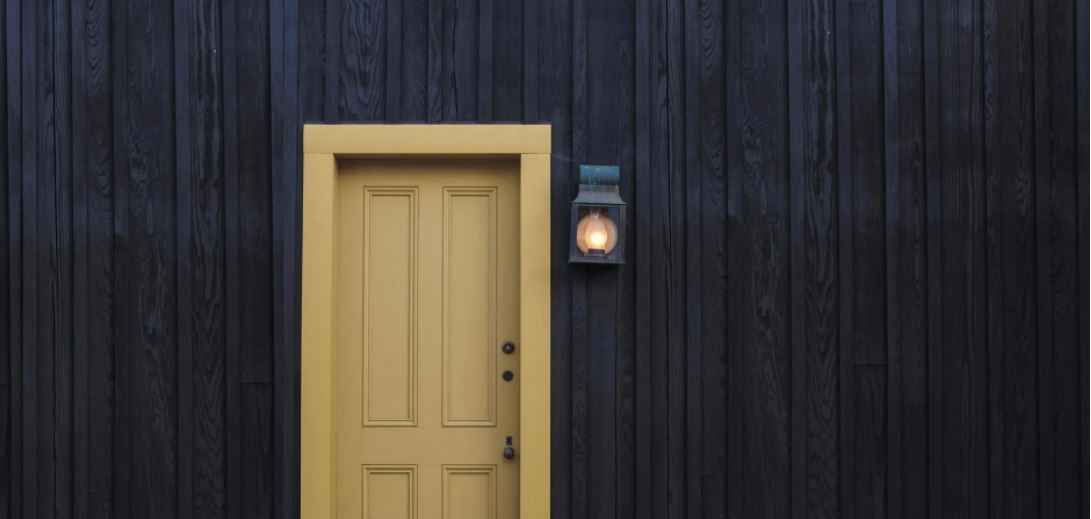Wood is water-resistant by means of a charring of the wood surface. In Japan, this art is called Shousugiban. The method chars the wood without burning it. By means of carbonation, wood becomes waterproof and more durable. Furthermore, the resulting layer protects against fungal and insect infestation.
Shousugiban has parallels in Europe
The charring of the wood is an ancient technique that has been used to preserve it. In Germany, it was found for example in half-timbered construction. There, the lower sides of the beams placed on the foundation were charred. This effectively protected against rot and was practiced until the beginning of the 20th century. In some regions of Europe, the roof beams were used to protect them from the dreaded sponge infestation. Conservationists try to preserve this building technique for posterity, but it is hardly known in Germany.
Shousugiban in Japan with ancient tradition
In Japan, Shousugiban is still known today as a traditional firing technique, with which the renewable raw material wood is preserved naturally. The outer layer is charred after a specified drain. This method creates long-lasting and almost maintenance-free facades. This controlled charring of the wood not only protects the facade, it offers numerous aesthetic advantages. The structure of the wood is underlined. The natural beauty of the grain really comes to the fore. The attraction lies in highlighting beauty through the actually devastating fire and bringing transience into the center of contemplation. When looking at such buildings, man is encouraged to think.
How Shousugiban works
With the Shousugiban, there are several work steps that lead to the final result:
- Charcarboning the wood
- Cooling down
- Cleaning
- Finishing with an oil
Traditionally, the Japanese cypress, called “Sugi”, is treated during charring. However, many other types of wood can also be used. These include e.B.
The word Japanese word “Shousugiban” means translated into German means that boards made of cedar wood are burned. In addition to sealing and preserving, the charring has other positive effects. The material is more fire-resistant and protected against vermin and termites. Experts say the wood will remain maintenance-free for a period of 80 to 100 years. If it is additionally sealed with oil, the shelf life can be extended even further.

Aesthetics amplified by Shousugiban
In addition to strengthening the material properties, there are extensive aesthetic improvements. Wood, which is treated by Japanese charring, produces very special view elements. The charred facade has unique charm. It stands in particular contrast to its surroundings, to other houses, to trees and to the garden. In European latitudes, the sight still seems very unfamiliar.
The visually beautiful effects are prominent for example at a Shousugiban house of “Schwartz and Architecture” near the American Silicon Valley. The architects were inspired by the surrounding nature. They took natural surfaces as role models, including bark, leaves and boulders. The two-story house with its Shousugiban facade fits well into the surroundings in this way. Other buildings use the contrasts that make the charred facades possible. Thus, bright and white interiors can be brought in pleasant contrast to the outer shell.
Increasingly, the desire of builders to build houses in a natural way is emerging today. Shousugiban facades do not require chemical wood preservatives. As a rule, the charring of the boards takes place on site according to the traditional operations.
How does Shousugiban traditionally work?
Three boards are bound together to form a triangular tube. They are placed vertically, a paper is inflamed in them. Due to the chimney function of the tube, a uniform and continuous flame of the wood surfaces is achieved. If the upper layers are charred, the boards are separated again and everything is extinguished with water. In the present, wood is treated with industrial carbonation systems according to this method. This results in standardized products.
What is the significance of Shousugiban in Europe?
Until recently, the method was not widely used in Europe, but it is becoming increasingly important. In the sense of sustainable construction, she finds her lovers. The charcoal layer is fixed for interiors and furniture.
What Kind of European woods can be refined using Shousugiban?
Since Europe is located at similar latitudes as Japan, the technique can also be applied to growing woods. These would be e.g. fir, yew, spruce, pine and cedar.
For more information click on the following posts:
Unique wood with shousugiban
Change your home in a japanese house